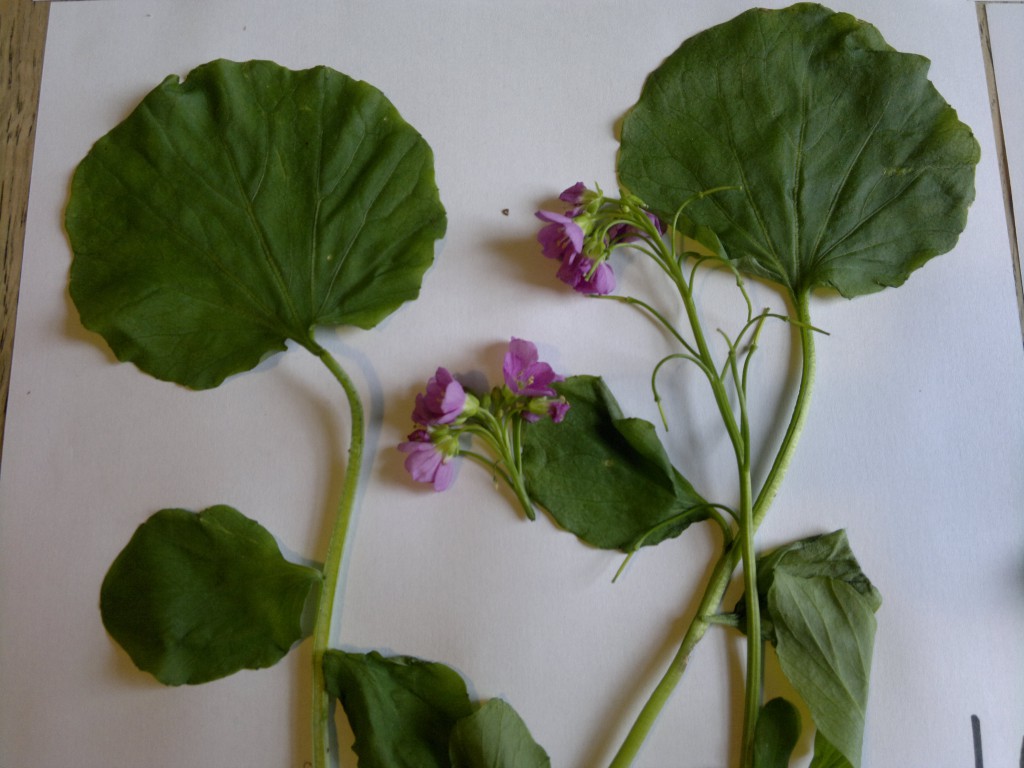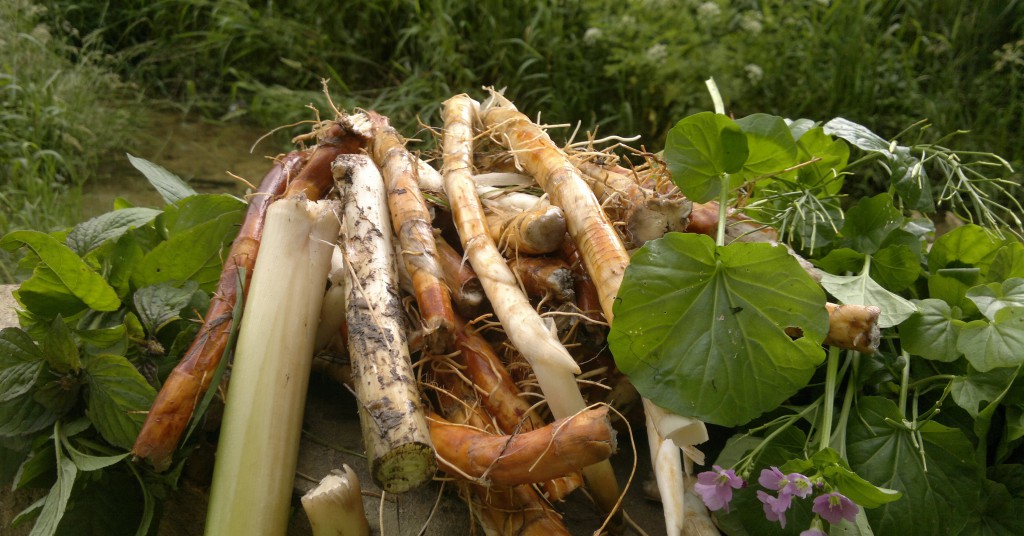Greater cuckoo flower – Identification, Distribution, Edibility
Cardamine raphanifolia
- Edibility – 4/5 – leaves and flowers. Although I can find no verified reports of human infection, as an aquatic member of the brassica family, it seems probable that greater cuckoo flower could play host to the larval stages of liver fluke. This is always mentioned in relation to wild watercress, but often not considered in discussions of other aquatic brassicas. As a predominantly woodland/shade loving plant, it is less likely to be surrounded by livestock, so the risk will generally be considerably less. Nevertheless, the possibility is worth being aware of – full lowdown here.
- Identification – 4/5 – 30-50cm tall, 4 petalled pink flowers, leaf stalks with 1-3 small paired oval lobes and one large kidney-shaped terminal lobe, all glossy and distinctly veined
- Distribution – 2/5 – Not common but widely dispersed throughout the UK in wet woodland, riverbanks and marshland. It often seems to be a garden escapee. Possibly overlooked in some areas, but take care to spend some time observing and getting to know a patch if you find it and decide what an appropriate level of harvesting might be. Around me it grows thickly along a woodland stream network from which I thin it year-round, but especially in March, August and November when there are less other punchy salad brassicas about.
- Season – All year, best in spring/summer
After first encountering this unusual and delicious brassica in the Scottish highlands, I was delighted to stumble on it again in my favourite bit of Galloway swamp – 10 minutes from my house. Foraging is a process of constant learning and though the four-petalled flowers and leaf structure instantly identified it as mustard family (brassicaceae), it took a fair bit of research and online pestering to finally pin it down.
It tastes rather like a refined version of watercress, with a peppery, rocket-like kick. Young leaves in the spring have an echo of the horseradishy flavours of its relative the cuckoo flower (cardamine pratensis). It makes a truly excellent year-round salad green and can be cooked like watercress – though I think this is rather a waste of its fresh, crunchy succulence. As an accompaniment to steak or in sushi it is a fantastic addition to anyone’s wild larder.
Seek it out in wet woodlands and marshes alongside water mint, watercress, reedmace, pie cress, arsesmart and highly poisonous hemlock water-dropwort – which you should be familiar with before picking any wetland greens.
Related Posts:
- Wild cardamines: Hairy Bittercress, Large Cress and Cuckoo Flower
- The Brassica/Mustard Family
- An Introduction to the Brassica/Mustard Family for Foragers
- Browse more edible wild plants on the wild food guide





1 Comment
The leaves of this in your pictures look massive! Does it have a lot smaller leaves sometimes closer in size to watercress?